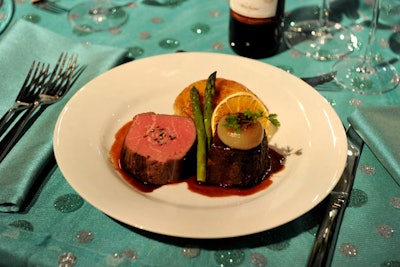
With most caterers building overages into their event plans, much wholesome, edible, and nourishing food goes to waste every day—and it doesn’t have to. Event professionals who donate leftover food following events are protected under the law, and the process can be easy, safe, and streamlined. Here are five tips for how to make it happen.
1. Plan ahead
Donating food following an event can’t be an afterthought. Planners need to Integrate the intended donation into the pre-planning process, as they would any other event detail.
"Food donation starts with simple planning and strategies. Given the opportunity, before you sign a contract with a caterer, hotel, or resort, let them know that you are writing into the contract a sentence that states, 'All leftover food, prepared but not served, cannot be thrown away, but must go to an antihunger agency,’” says Syd Mandelbaum, C.E.O. and founder of Rock and Wrap It Up, an organization that works throughout North America to recover leftover food. "We have found that most caterers work with 5 to 10 percent overage, so there is a good chance there will be leftover food to help feed the hungry in the city where the event is being held.”
2. Know your rights
Industry professionals sometimes say they’re worried about potential liability issues related to donating food. But experts say that legal protections are in place to eliminate the need for concern.
"It is important to note that the Bill Emerson Good Samaritan Laws protect food donors as long as safe food handling is used,” Mandelbaum says.
Naomi Raiselle, co-founder of the New England National Association for Catering and Events' Feeding Our Neighbors initiative, adds: "Often venues and caterers are unaware of the scope of protections under this federal law, which was passed in order to discourage waste and encourage food donation. If a venue or caterer still is uncomfortable donating food because of perceived liability issues, suggest that they run the law past their corporate attorneys."
3. Work with vendors
Make sure all relevant members of the event team are on board with the donation plan and its execution. And let them know about their legal protections, too.
"Speak to your planner, your venue coordinator, or your caterer,” Raiselle says. "Explain that you would like to donate any wholesome food left over from your event to a local food rescue operation. Give them a copy of the Bill Emerson Act. They may already be doing food donation, in which case you will have nothing to explain."
4. Partner with a local organization
Locate the local organization to receive the donation and arrange the specifics—in particular, how the food will make its way to the group following the event. Mandelbaum suggests using the Hungerpedia tool on the Rock and Wrap It Up website to find a listing of vetted agencies that can be contacted for food recovery from events throughout the continent—groups that have their health certificates, transportation, refrigeration, and other bona fides.
Raiselle adds: "Contact your local food rescue operation and ask whether they are available to pick up food at the venue or caterer's after the event or the next day. Arrange for a time. Ask what the minimum donation is for pickups. After the event, your venue coordinator, event planner, or caterer should call the food rescue operation to confirm the approximate amount of food and the time of pickup."
Joachim Splichal, whose Patina Catering caters and donates food following the nearly 4,000-person Emmys Governors Ball, says, "When donating food after events, I suggest searching for organizations that have existing pickups. For example, here in downtown Los Angeles, I work with the Midnight Mission, a rehabilitation center for the homeless, where I drop off leftover food after the Emmys Governors Ball. We've been doing this ever since we started working with the Emmys, but it wouldn't have been possible if I hadn't done my research prior.”
Raiselle adds that some smaller food rescue operations may need a representative from the event staff to bring the food to the organization. If so, package it properly, cover it tightly, and get it there quickly. "Aluminum foil trays, bamboo recyclable trays, covered and marked, are ideal for donation,” she says.
5. Measure and report the news
Promoting a post-event donation of food is not only good for the bottom line, but it also encourages others in the industry to do the same good work.
"Sustainability and resilience have become the buzz words of corporate boardrooms, and showing company social and environmental stewardship through food donation enhances that image,” Mandelbaum says.
The Rock and Wrap It Up mobile app, the Whole Earth Calculator, converts the pounds of food into a U.S.D.A.-calculated number of meals and E.P.A.-configured greenhouse gas CO2e equivalents. The mobile app then sends the recovery data out as a tweet to update social media sites.
Beyond that, Raiselle says, “You may be able to place a dollar value on the donation, which the food rescue operation can document with a receipt that you can use for tax purposes."



















